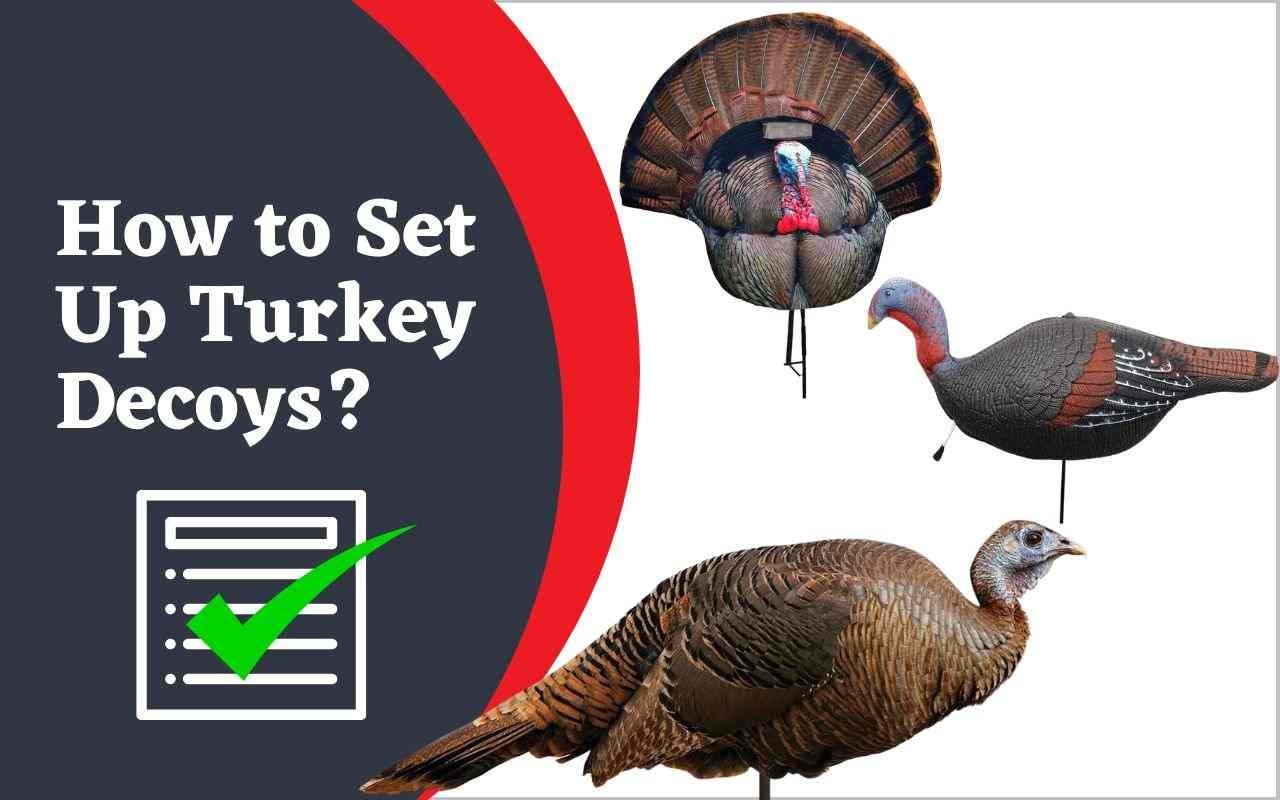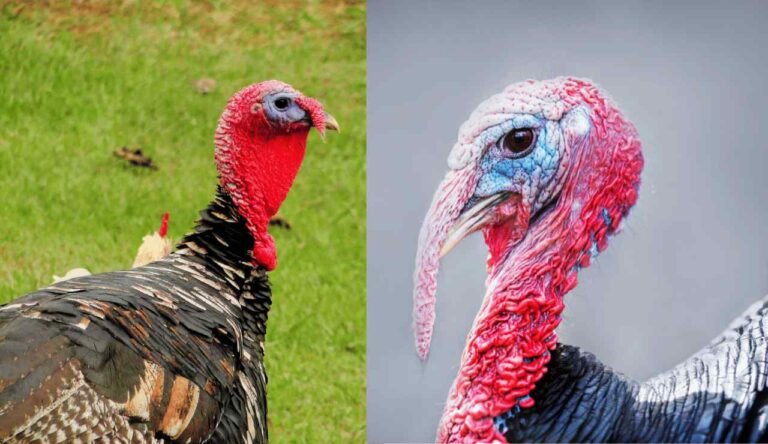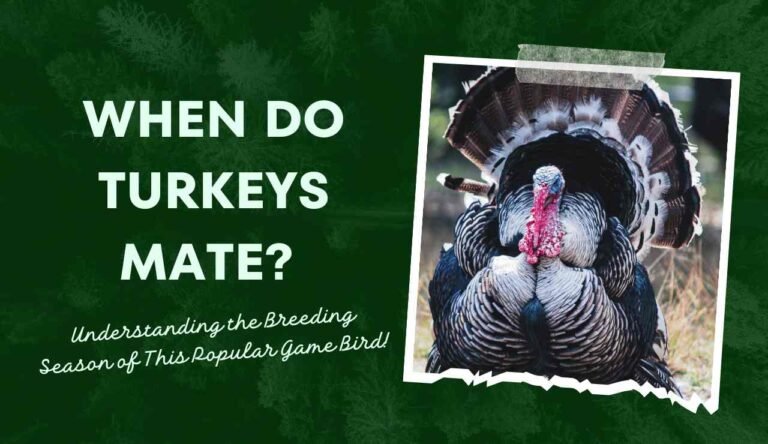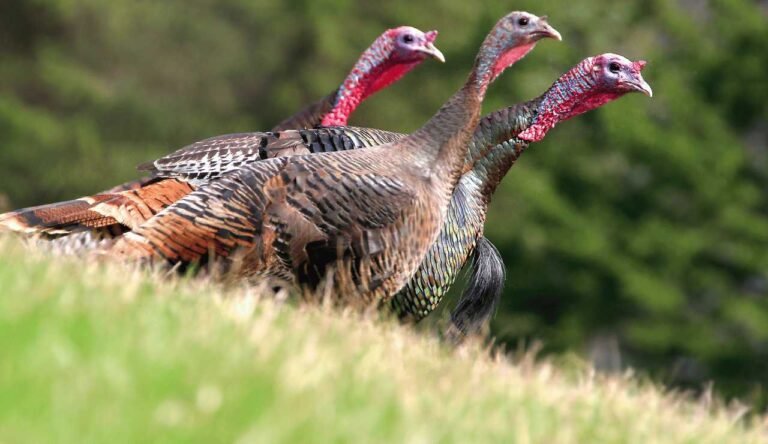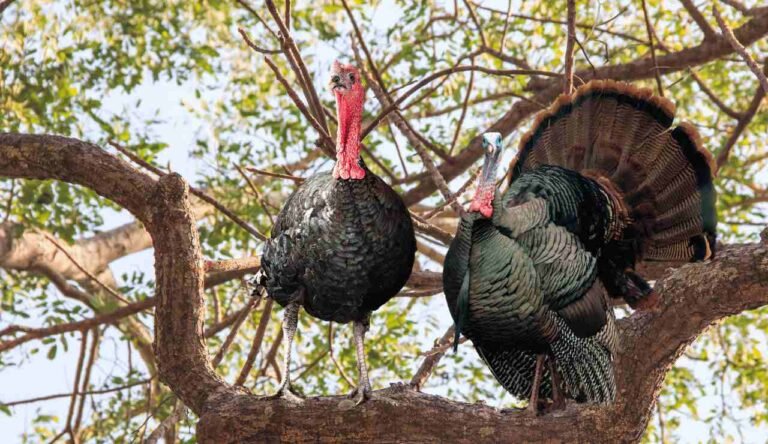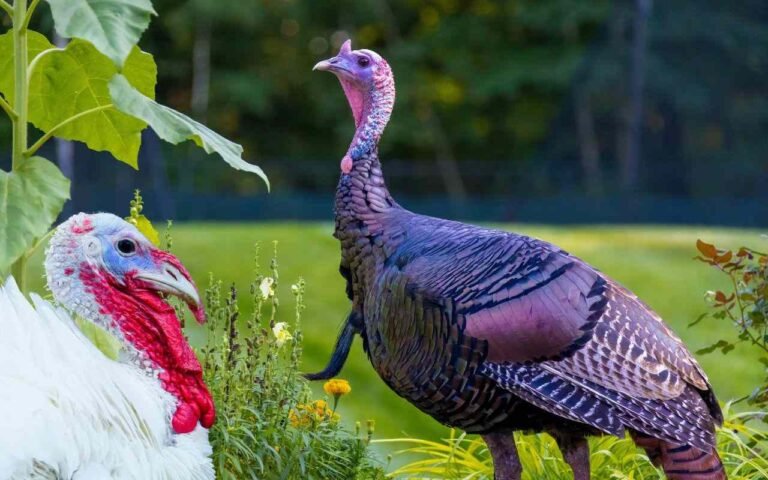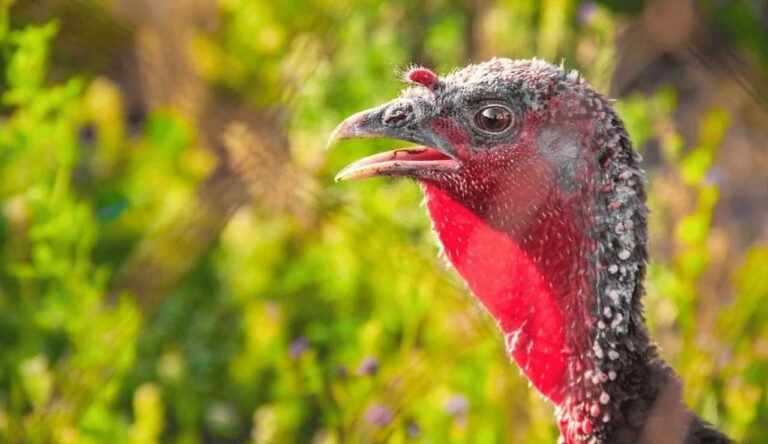How to Set Up Turkey Decoys? Master the Art of Decoy Setup and Learn the Tactics for Unmatched Success!
Setting up turkey decoys may improve your turkey hunting results. Decoys may bring gobblers into range whether you’re an experienced hunter or a newbie. But setup matters. This detailed guide will show you how to put up turkey decoys. We’ll help you optimize your hunting success by educating you about decoys, locations, and realistic settings. Let’s start the turkey decoy setup!
Importance of using turkey decoys
Turkey decoys improve turkey hunting success. Decoys may boost hunting success by attracting gobblers. Decoys and proper setup have several advantages.
Turkey decoys complete the attraction circle, which is a major benefit. Decoys attract more birds and make them more comfortable by mimicking a “turkey.” This improves the possibility of turkeys visiting your hunting location.
A realistic decoy arrangement may attract turkeys by appealing to their instincts. Turkeys approach realistic representations of their species. Full-bodied decoys are more lifelike to approaching turkeys than collapsible shells. The table below lists full-bodied decoy benefits:
| Benefits of Full-Bodied Decoys |
|---|
| Enhanced realism |
| Increased effectiveness |
| Greater attraction |
| Improved chances of success |
Another benefit of two-dimensional decoys or silhouettes is their mobility in addition to their realism. These decoys are perfect for run-and-gun hunting scenarios since they are lightweight and take up little room in your hunting kit. The benefits of two-dimensional decoys are shown in the following table:
| Advantages of Two-Dimensional Decoys |
|---|
| Portability |
| Easy storage |
| Suitable for active hunting |
| Realistic appearance |
Additionally, using many decoys might increase setup visibility and give turkeys more chances to detect your decoys from a distance. This could make your hunting location seem more appealing overall. Here is a table that lists the benefits of employing many decoys:
| Advantages of Multiple Decoys |
|---|
| Increased visibility |
| Enhanced attraction |
| Greater opportunity for spotting |
| Higher chances of success |
Overall, using turkey decoys involves attracting and distracting elements that appeal to the competitive and mating impulses of the birds. You may optimize your hunting approach and raise your chances of a successful hunt by comprehending and adjusting to your decoy arrangement while keeping a natural appearance.

Types of Turkey decoys
| Type of Decoy | Description |
|---|---|
| Full-Body Decoys | The most realistic sort of turkey decoy on the market is a full-body decoy. They generally consist of lightweight materials and provide a realistic portrayal of the whole body of a turkey. |
| Half-Strut Decoys | Half-strut decoys are a kind of full-body decoy that imitate a male turkey's behavior while it is half-strutting. They exhibit dominance and have the potential to draw in other turkeys. |
| Jake Decoys | Jake decoys, which simulate young male turkeys, may elicit a gobble from dominant adults. They may be used effectively all season long and simulate young turkeys. |
| Hen Decoys | During the mating season, hen decoys that mimic female turkeys may be useful at luring gobblers. They provide you greater freedom to make important decisions during the hunt and give you visual confirmation of the presence of turkeys. |
| Tom/Gobbler Decoys | Adult male turkeys are imitated by tom or gobbler decoys, which may trigger aggressive behavior and draw in additional males. However, due to the lifelike look of these decoys, hunters should take care while deploying them in places where there are other hunters. |
Decoys Placement
| Decoys | Placement and Setup | Recommended Products |
|---|---|---|
| Full-Body Decoys | Position carefully to create a setting that reflects the actions of turkeys in their natural habitat. | Redhead Foam Turkey Decoy 3-Pack, Primos Lil Gobstopper Jake/Hen Combo, Avian-X HDR and LCD series of turkey decoys |
| Half-Strut Decoys | Place the half-strut decoy about 10 to 20 yards away from where you will be hunting. | Avian-X LCD Half-Strut Jake Decoy and Primos B-Mobile Half-Strut Jake Decoy |
| Jake Decoys | Place the jake last and facing your setup to give the impression that a small flock is fleeing. | Hunters' Specialty Jake Decoy, KILLERGEAR JakeFan, X-TREME Jake Decoy by Dakota Decoy, Primos Hunting Lil Gobstopper Jake Turkey Decoy, Avian-X LCD 1/2 Strut Jake Turkey Decoy, 3/4 Strut Jake Decoy by Dave Smith Decoys |
| Hen Decoys | As the season goes on, adjust your position to face your setup. | Avian-X HDR Hen decoy, HS Strut Lite Flock Jake & Feeding Hen & Upright Hen Turkey Decoys |
| Tom/Gobbler Decoys | Take time and location into account, add movement for realism, and add a gobbler cry for emphasis. | Primos Lil Gobstopper Jake/Hen Combo |
Materials and features to consider
| Material | Description |
|---|---|
| Foam | A decoy's lifespan is ensured by its lightweight, strong substance. |
| Rubber | Provides adaptability and lifelike textures, which enhances the natural appearance of the decoys. |
| Plastic | An affordable and lightweight alternative for turkey decoys. |
| Features | Description |
| Realistic Paint | High-quality paint with feather designs that closely imitate the look of genuine turkeys. |
| Realistic Textures | The decoys include intricate features, such feather textures, that improve their realism. |
| Motion | Decoys that can move, such as those with moving body parts or spinning heads, may imitate real movement. |
| Adjustable | Decoys have movable parts that let you alter the decoy's posture or position. |
Choosing the Right Location turkey decoys
| Factors to Consider Choosing Right Location | Description | |
|---|---|---|
| A) | Scouting for turkey activity | Scouting is used to learn more about the movements, roosting locations, feeding grounds, and behavior of turkeys. |
| To recognize the patterns of a turkey, look for its tracks, droppings, and scratchings. | ||
| Late summer is an ideal time to begin scouting since turkeys are less likely to roost in trees and more likely to sleep on the ground or in bushes. | ||
| B) | Identifying high-traffic areas | Examine local animal observations and topography to identify turkey-friendly spots. |
| Pay attention to regions with plenty of food sources, such as wide-open spaces or places with trees that produce mast. | ||
| C) | Evaluating visibility and natural surroundings | Pick positions where you can see coming turkeys and yourself well. |
| To increase the efficacy of decoys, blend them with their surroundings. | ||
| Position your decoys slightly to the left or right of where you are standing rather than exactly in front of you. | ||
| Take measures to reduce the impact of solar glare on your setup. |
Setting Up Turkey Decoys
| Aspect | Gobbler and Hen Setup | Jake and Hen Setup | Multiple Hen Setups |
|---|---|---|---|
| Preferred Placement | Tom decoy head faces expected turkey direction | Jake decoy head faces away | Hens facing setup, jake decoy placed last |
| Distance from Blind | Around 10 yards | No more than 20 yards | No specific distance mentioned |
| Safety Considerations | Remain alert, even on private land | Decoys placed 15-25 yards from position | Stake decoys slightly off to the left or right |
| Recommended Distances | Not specified | Jake and hen decoys within 20 yards | Not specified |
| Creating Realistic Scene | Set up in natural surroundings with good visibility | Blend decoys with the environment | Blend decoys with the environment |
| Movement | Not specified | Use lightweight decoys that pivot in the wind | Not specified |
Additional Tips for Setting Up Turkey Decoys
| Topic | Additional Tips |
|---|---|
| Using decoy stakes or bases | • To keep turkey decoys in place, use stakes or bases. • Bring a backup decoy stake or other setup alternatives with you. |
| Adjusting decoy postures and positions | • Try out several poses and attitudes for the decoy. • To encourage dominating behavior, use a strutting tom decoy. • To represent eating or breeding positions, move a hen decoy into the appropriate position. |
| Utilizing realistic calling techniques | • Use calling methods that are true to the behavior and cries of the local turkeys. • Use a variety of turkey sounds, such as gobbles, yells, and purrs. |
| Incorporating decoy movement strategies | • Decoys may be designed to move subtly for a more convincing effect. • To allow for a little mobility without the decoy bouncing too much, place sticks on each side of the tail. • Choose lightweight decoys that can swivel in the wind to give them a realistic look. |
| Adapting setups to hunting conditions | • Your decoy setups should be adjusted to the particular hunting circumstances. • If the turkeys are hanging up at a certain distance, adjust the decoy positioning. • When choosing the best decoy location and arrangement, take into account the terrain, weather, and turkey behavior in your region. |
Common Mistakes to Avoid
| Decoy Mistakes | Description |
|---|---|
| Overusing or underusing decoys | Decoy use must be balanced. Overusing or using too few decoys might reduce their efficacy. Adjust decoy number depending on hunting conditions, location, and turkey behavior. |
| Placing decoys in unnatural positions | Turkeys may not believe unnaturally placed decoys. Study local turkey behavior and place decoys in eating, breeding, or alert locations. |
| Ignoring wind direction and visibility | Turkey decoy placement depends on wind direction and visibility. Place decoys so approaching turkeys may see them. Placing decoys with the wind at their backs mimics turkeys' approach direction. |
| Using poorly maintained or damaged decoys | Damaged decoys are less effective. Check for damage and clean them. Maintain realism and attractiveness by repairing or replacing. |
Conclusion
In conclusion, it is critical to strike the correct balance while utilizing turkey decoys, place them organically, consider wind direction and visibility, and keep them in excellent shape. However, repetition and experimentation are the keys to perfecting turkey decoy installations. Every hunting environment is different, so by going into the field, experimenting with various settings, and seeing how turkeys behave, you can hone your skills and discover what works best in your particular hunting territory. Accept the thrill of the hunt, modify your tactics, and take pleasure in learning how to put up turkey decoys correctly. Happy searching!
FAQs related to setting up turkey decoys
How to set up turkey decoys?
When setting up turkey decoys, it is recommended to use a complete strutter, hen, and Jake decoys. Place the decoys near highways or paths where gobblers have a higher chance of spotting them. To create a natural setup, stake the decoys slightly to the left or right. Keep the decoys positioned at 15-25 yards for optimal shooting opportunities. To attract toms in search of mates, utilize feeding decoys.
Additionally, adjust the decoy positioning to minimize solar glare. Adapting your decoy arrangement based on hunting pressure and experimenting with different techniques to determine what works best is important. Continuously improve your approach by trying various configurations and closely observing turkey behavior. Remember that each hunting situation is unique, so it is essential to modify your techniques according to the specific behavior and conditions of turkeys in your hunting location.
What are some common mistakes to avoid when setting up turkey decoys?
Overusing or underusing decoys, positioning them in odd places, neglecting wind direction and visibility, and using broken or poor conditions are all common errors to avoid while putting up turkey decoys.
How many decoys should I use for turkey hunting?
The number of decoys to utilize will vary depending on the turkeys’ terrain, location, and behavior. To make a realistic portrayal without scaring away or disappointing the turkeys, it’s critical to strike the proper balance and alter the number of decoys.
How should I position the decoys to attract turkeys?
Decoys should be placed in a natural setting to represent turkey behavior accurately. Study the local turkey habits, then place the decoys to mimic eating, breeding, or alert behaviors.
What should I consider regarding wind direction and visibility when setting up turkey decoys?
Visibility and wind direction are important considerations. Place the decoys so that approaching turkeys can see them well, and think about putting them with the wind at their backs to match the direction they often approach from.
How important is the condition of the decoys?
It’s crucial to use decoys that are in excellent shape. Ensure they are undamaged, clean, and wear and tear-free. Fix or replace any damaged or missing components to keep the decoys realistic and beautiful.
- Florida Turkey Season 2025-2026: Latest Hunting Dates, Licenses & Rules Available! - October 16, 2025
- Delaware Turkey Season 2025-2026: [Everything You Need to Know Dates, Regulations, Bags & More] - October 16, 2025
- Connecticut Turkey Season 2025-2026: [Dates, Regulations, Bag Limits & More] - October 16, 2025
